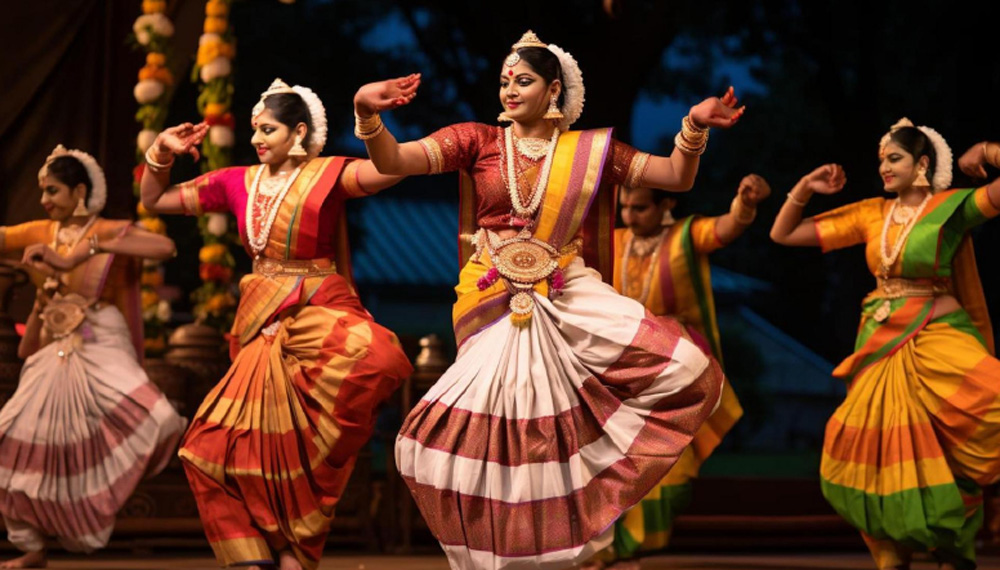
Kuchipudi is one of the major Indian classical dance folk forms performed in India. It derives its name from its village of origin, Kuchelapuram and is one of the favourite dance forms of Lord Krishna.1 It is considered to be a form of dance-drama that is well known under the generic name of Yakshagaana. Similar to other dance forms, Kuchipudi has its roots that originated from Sanskrit Natya Shastra, the foundations of performing arts.
Kuchipudi is known for its fast rhythms and fluid movements, creating a blend of delicacy and strength. In this dance form, a male dancer usually wears an Agnivastra, which included a dhoti, whereas a female dance wears a sari. Modern Kuchipudi acquired its present form in the 20th century. Several people were responsible for moving it from the villages to the performance stage. One of the most notable was guru Lakshminarayan Shastry.
Traditionally, all males performed Kuchipudi until a colonial-era when Lakshminarayana revolutionized the concepts of this art form. He introduced females to the art form, along with the idea of solo-dancing.3 After him, many other visionaries have moulded it into its present shape.
In today time, the concepts laid out by Lakshminarayana have cemented their place in our minds for eternity. The Kuchipudi performance is accompanied by a live orchestra comprising of singing and percussions. The hand gestures, also called mudras and facial expressions, are stylized to convey a wide range of complex sentiments and feelings.2 The whole body is responsible for communicating the emotions which arise from the song.